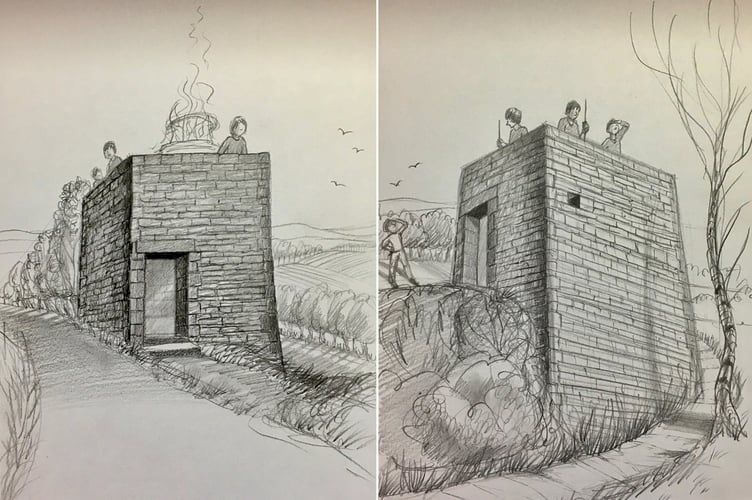A LOCAL community have banded together in a bid to prevent an historic monument from being demolished.
The informal action group are hoping to persuade Herefordshire Council from demolishing the Linton Pound because of its structural condition, despite being listed by the authority as an ancient monument.
The condition of the Pound has further deteriorated in recent weeks, resulting in Herefordshire Council last week posting notices of its intent to demolish the Pound on the fencing surrounding the structure. It had previously posted notices seeking the rightful owner.
Over 70 residents signed a petition addressed to the authority requesting time be granted to conduct an archaeological survey to establish if the structure could be repaired economically.
Local MP Jesse Norman said: "There is a great deal of public concern in and around Linton at the proposed demolition of the Linton Pound, and I have been working very closely with local constituents to make sure that their views are fully represented to Herefordshire Council.
"The Pound is listed on the Council website as a historic monument, and it is located in a very strategic position.
“Experience elsewhere has shown that it is often not until such monuments are threatened that we really discover more about their original purpose and function.
"Given the serious safety concern, it is obviously important that this site should be made fully secure.
“But I would have thought that once that is done there ought to be time for a proper public discussion and consultation with local people about its future."
Village historian Roger Davies told an impromptu public meeting on Saturday, attended by some 40 people, that it is hoped that a meeting can be organised with council officials as soon as possible and that the authority will reconsider its position due to our canvassing.
He added: “It seems that no effort is being made to protect this historic monument whilst building works are ongoing on the neighbouring property.
“Herefordshire Council should have been looking to protect this historic monument. The loss of our heritage should not be taken lightly especially when attempts to secure its future have been ignored.”
Cllr Harry Bramer told the Gazette: “Linton is part of my Herefordshire Council Ward and as such I have giving my support to the group of around 70 residents, seeking to save the listed Monument from demolition.
“I understand however that the authority’s chief executive, Paul Walker is now conducting an enquiry as to the various potential possibilities.”
A communication from Roger Allonby, Herefordshire Council’s director for economy and growth, which was read out at the meeting, stated that the Linton Pound had been brought to the authority’s attention because allegations had been made that children were playing in this area.
Mr Allonby added: “The structure is so unstable, should it collapse the injures caused could be very severe. Therefore, the council had to act immediately to address this issue.
“Around 18 months ago the public footpath immediately adjacent to the site was closed. Unfortunately, the structure has now further deteriorated to a point where the council has the power to take the necessary steps to remove the danger under the Buildings Act.
“The council’s archaeologist has assessed that whilst these sort of ‘pounds’ have a degree of interest, but it does not mean they are of importance as a ‘monument’ and does not have protection in law.
“The loss of heritage is not a matter that is in anyway taken lightly, but public safety must be given the highest priority.”
Campaign to save Linton Pound from demolition
The Linton Pound is at least 160-years old but is likely to be much older and could even date back to the sixth century.

Historic maps document The Pound’s use as an animal pound, which were used in the past to hold stray animals until they could be collected by their owners.
The Linton Pound is likely to have been built in the mediaeval period and would have been at least 20 feet high on two of its elevations. It could have been used as a lookout tower, located on the intersection between an Anglo-Saxon route and an ancient road into Gloucestershire and would have had views towards the Malverns, the Cotswold hills and the Welsh mountains.



.jpeg?width=209&height=140&crop=209:145,smart&quality=75)
Comments
This article has no comments yet. Be the first to leave a comment.